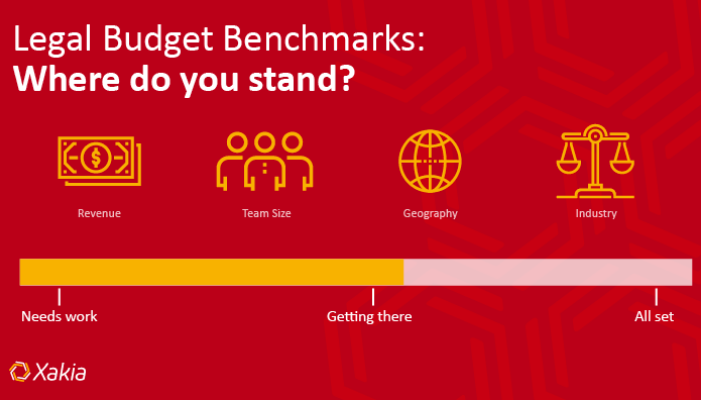 What does it take to thrive in today’s knowledge economy? If you read commentary from the legal industry, the answer is clear: innovation. This buzzword is alluring because it’s amorphous, ambiguous, ill-defined, and unmeasured. We can reward ourselves for “doing something,” while doing nothing at all. If we can’t agree on a definition or direction, we can continue talking without taking any action.
What does it take to thrive in today’s knowledge economy? If you read commentary from the legal industry, the answer is clear: innovation. This buzzword is alluring because it’s amorphous, ambiguous, ill-defined, and unmeasured. We can reward ourselves for “doing something,” while doing nothing at all. If we can’t agree on a definition or direction, we can continue talking without taking any action.
Better still, few people will call you out on it—and you may even win an award. This keeps us in our comfort zone: debating opinions and poking holes in any plan someone else is pursuing. So how do we get beyond hand-wavy and half-baked references to “innovation” to identifying the real work to be done?
Addressing Tomorrow’s Problems Today
Great thinkers have been asking variations of this question since Drucker coined the term “knowledge worker” in 1959. Economists, behavioral scientists, business analysts, and numerous other researchers have sought to determine what it would take for knowledge-based businesses to be successful in the 21st century.
Recognizing that a shift from physical labor to intellectual labor has occurred, they ask:
- How do we improve knowledge worker productivity?
- How can we ignite employee passion and commitment to get more from our workforce, in terms of happy clients or higher profits?
- How can we encourage knowledge sharing and leverage our collective knowledge?
- How can we obtain a competitive advantage to become a market leader?
- What factors must be present to unlock innovation in forward-thinking companies?
Exploring any one of these questions would be interesting. However, as I started looking into them, I noticed they had more in common than I first thought. Regardless of which question is asked, the same six factors are relevant.
Six Emerging Themes
In 1999, Drucker declared that improving knowledge worker productivity would be the most important question for managers in the 21st century. He went on to identify six factors that contributed to productivity. In 2014, a meta-analysis of 800 empirical studies re-stated and affirmed the six factors. Looking at them today, they look just as relevant for law firms as they ever did.
The overarching theme that emerges is that a future-ready company comes from passionate employees who feel confident enough to work together, challenge the status quo, and deliver new insights that will delight clients and grow profits. When employees feel secure enough to take risks and share the results of those risks without fear of retribution (should something go wrong) and without feeling the need to hoard information to protect their status, they do so more regularly. With employees taking risks and sharing the results of those risks, companies are able to uncover—and meet—their potential.
To get there, six factors must be present:
- Autonomy: Give employees the freedom to define the task at hand and allow them to work in their own way. Recognize that knowledge work is usually not visible, and is often unstructured. Measure contribution by quality, not quantity. Look for outcomes instead of counting hours.
- Perceived Security: Employees must feel secure enough to challenge the status quo, take risks, run experiments, admit to failure and learn from it. They must also feel that sharing their knowledge will not lead to lost status. Status gains outsized importance in up-or-out, competitive hierarchies.
- Respected Use of Time: Allow employees to be flexible in how they spend their time, and do not force them to account for every minute. Similarly, do not waste employee time with meetings and other organizational drag. Flexible time and free time allow for discretionary energy, which invites employees to work more and more creatively toward goals.
- Aligned Goals: When the company and the employee believe that they are jointly solving problems that they each deem important, they become allies in their efforts and invest in each other. Aligned goals ignite passion, commitment, and sharing.
- Social Cohesion: A sense of belonging gives rise to voluntary interactions and informal knowledge sharing. Through social cohesion, employees develop a collective awareness of individuals’ knowledge, strengths, and history. Collective knowledge can be drawn on and built upon to create new knowledge, which is essential to breakthrough insights.
- Trust: Trust is the glue that holds it all together. Employees must trust that others: (1) are competent and committed; (2) will not freeload or selfishly use knowledge for self-enrichment; (3) will contribute work that is high-quality and reliable so that it need not be re-checked, and can instead be built on.
Sound Like Your Law Firm?
Looking at these six themes, can you honestly say that all six are in place at your firm? Some forward-thinking law firms may be working towards a few of them. But most of us still have a long way to go. How can we change that?
Because there are only six factors, it seems that addressing them should be easy. It’s a short list and I’d like to say that it is easy. But it’s not. These six factors go to the heart of company culture. And, unfortunately, it seems that they are the opposite of how most law firms operate today. The majority of law firms have harnessed the insecurity of lawyers to extract ever-increasing hours and squelch divergent thinking. And now the overworked lawyers who have been ground down into conformity are asked to innovate—but can’t. Discovering that we may have created the monster that is now blocking us from our profit potential is disheartening, to say the least.
Side Note: Don’t think that hiring a single knowledge manager, innovation manager, or “millennial” will absolve you of your need to make major changes to your culture. It is simply too much to expect one star-performer in each company to create these types of breakthroughs on their own. Single-minded pursuit of individual knowledge is not enough. To unlock growth, knowledge must be shared and collectively built upon. Without sharing and collective effort, we could keep asking the same questions and starting anew. We must do something different to make real progress. And culture is the main determiner of whether that can happen.
Unlocking The Future
Addressing the cultural barriers impeding progress will be immensely challenging. The level of buy-in to be successful is daunting. Inability to unite behind anything other than a desire for more profit has plagued law firms for decades and kept them from making the necessary changes to prepare for tomorrow’s business world.
The good news is that everyone can buy in to these changes for their own reasons. Total agreement isn’t necessary to get started, but alignment is. Because these six factors work together to address several modern challenges, it is possible for individual partners to coalesce behind a singular plan of action despite differing priorities.
Though changing culture may be the toughest challenge law firms have ever faced, the potential rewards are enormous. No combination of automation, artificial intelligence, and firms from other sectors will be able to compete with the law firms that get this right. In fact, change is possible; and racing against technology and the Big Four just might be the catalyst we need! With luck, alignment and clear objectives will mean that we can finally move past fighting each other to actually building a better legal profession and thriving law firm for tomorrow.
 Ivy B. Grey is an accomplished lawyer and writer. She is the creator of American Legal Style for PerfectIt, which is a proofreading and editing add-in for lawyers. Ivy is also a Senior Attorney at Griffin Hamersky LLP. She focuses her practice on bankruptcy, which includes distressed transactions and some litigation. She’s been named as a Rising Star in the New York Metro Area for four consecutive years, and her significant representations include In re AMR Corp. (American Airlines), In re Dewey & LeBoeuf LLP, In re Eastman Kodak Company, In re Filmed Entertainment Inc. (Columbia House), and In re Nortel Networks Inc. You can follow Ivy on twitter at @IvyBGrey or connect with her on LinkedIn at https://www.linkedin.com/in/ivybgrey/
Ivy B. Grey is an accomplished lawyer and writer. She is the creator of American Legal Style for PerfectIt, which is a proofreading and editing add-in for lawyers. Ivy is also a Senior Attorney at Griffin Hamersky LLP. She focuses her practice on bankruptcy, which includes distressed transactions and some litigation. She’s been named as a Rising Star in the New York Metro Area for four consecutive years, and her significant representations include In re AMR Corp. (American Airlines), In re Dewey & LeBoeuf LLP, In re Eastman Kodak Company, In re Filmed Entertainment Inc. (Columbia House), and In re Nortel Networks Inc. You can follow Ivy on twitter at @IvyBGrey or connect with her on LinkedIn at https://www.linkedin.com/in/ivybgrey/






